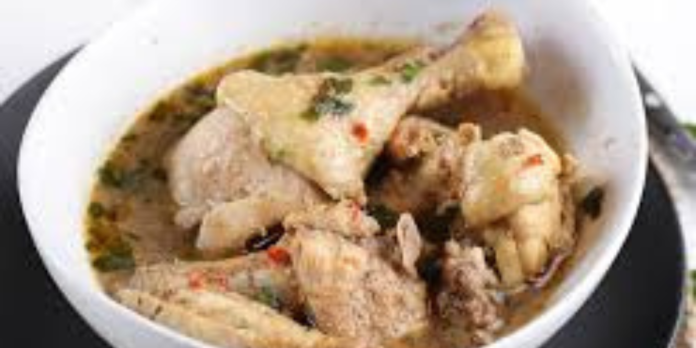Table of Contents
Chicken pepper soup, a deeply flavorful, spicy dish, is a favorite in West African cuisine, especially in Nigeria. Traditionally made with chicken, spices, and herbs, this soup has been enjoyed for generations as a comfort food, often during cold seasons or celebrations. While the basic recipe for chicken pepper soup is relatively simple, there are numerous ways to elevate the dish, making it even more flavorful, wholesome, and unique.
This article will delve into the best methods and strategies for making chicken pepper soup better. We will explore ingredient choices, cooking techniques, flavor enhancements, and presentation methods that will leave your guests or family impressed.
The Significance of Chicken Pepper Soup
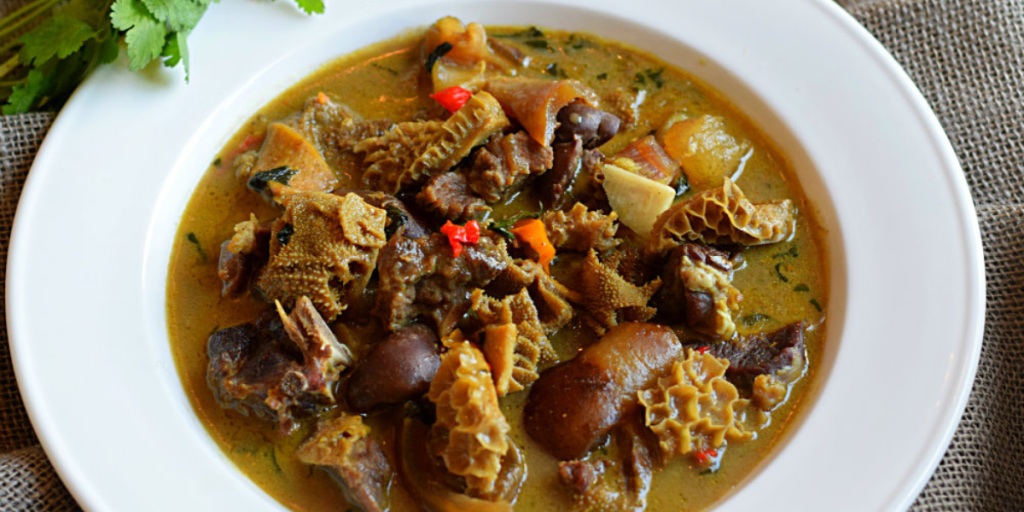
Chicken pepper soup is more than just a dish—it is a cultural and culinary symbol in West Africa, often served at special events like weddings, funerals, and family gatherings. In Nigerian homes, pepper soup is a warming meal, often eaten when someone is feeling under the weather or as an appetizer at festive occasions.
However, while chicken pepper soup is celebrated for its simple, bold flavors, there is always room to enhance and elevate it. Whether you’re making this dish for the first time or want to impress your guests with a refined version, improving your technique and experimenting with different ingredients can result in an unforgettable meal.
In this guide, we’ll walk you through every step of making the best chicken pepper soup, from ingredient selection to final touches, offering tips and tricks to make your soup stand out.
How To Make Jollof Rice and Chicken Best Of 2024
Selecting the Best Chicken for Pepper Soup
The quality of chicken you use can make or break your chicken pepper soup. Here are the key factors to consider when choosing your chicken:
Free-Range vs. Factory-Farmed Chicken
When preparing chicken pepper soup, free-range or organic chicken is always a better option. These birds have been allowed to roam freely, which results in firmer, more flavorful meat. The flavor profile of free-range chicken is significantly richer compared to factory-farmed chicken, which often lacks depth. In pepper soup, where chicken is the star ingredient, quality matters.
Benefits of Using Free-Range Chicken:
- More natural flavor
- Firmer meat texture
- Healthier, as they are free from antibiotics and hormones
Factory-Farmed Chicken:
- Often cheaper and more accessible
- Tends to be more tender but lacks robust flavor
- May require more seasoning or longer marination
Whole Chicken vs. Specific Cuts
Using a whole chicken for chicken pepper soup creates a rich, full-bodied flavor, thanks to the bones that release collagen and gelatin during the cooking process. If you prefer a specific type of meat (white or dark), that’s perfectly fine, but including bones is highly recommended for a deeper broth.
Key Chicken Parts to Use in Pepper Soup:
- Chicken Thighs: Known for their dark, flavorful meat, which stays juicy and tender even after long cooking times.
- Drumsticks: These are full of flavor and provide a good amount of meat while still having bones to enrich the broth.
- Wings: While not very meaty, they provide incredible flavor due to their high skin-to-meat ratio and bones.
- Neck and Backbones: These parts contain little meat but contribute significantly to the richness of the broth.
How to Cut Chicken for Pepper Soup
Cut your chicken into medium-sized pieces, ensuring that each piece has some bone. This allows the broth to absorb the flavor from both the meat and the bones. It also makes it easier to serve in portions.
Pro Tip: To ensure even cooking and better presentation, remove any excess fat or skin from the chicken before adding it to the soup. While the skin adds flavor, too much fat can make the soup greasy.
Goat Meat Pepper Soup with Scent Leaves : Best of 2024
Prepping Your Ingredients – The Power of Freshness
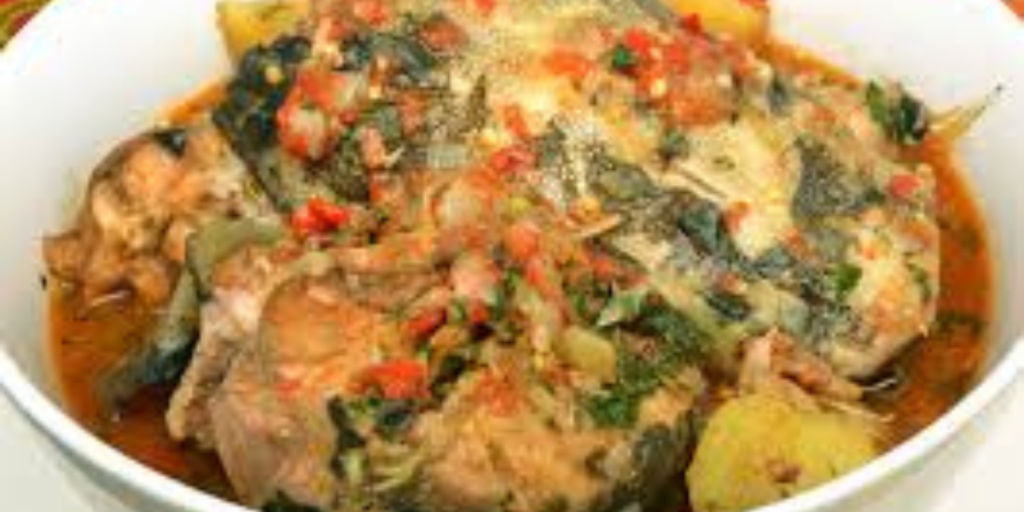
The best chicken pepper soup is made with fresh, high-quality ingredients. From peppers to spices, the freshness of each component impacts the overall taste of the dish. Here’s what you should know about sourcing and preparing your ingredients:
The Role of Peppers in Chicken Pepper Soup
Pepper is the heart of chicken pepper soup, giving the dish its signature spiciness. However, not all peppers are created equal. The most commonly used peppers in traditional pepper soup are Scotch bonnets or habanero peppers.
- Scotch Bonnets: These peppers are small, fiery, and pack a unique combination of heat and sweetness. They are a staple in West African cuisine and are preferred for chicken pepper soup due to their bold flavor.
- Habanero Peppers: These are similar to Scotch bonnets in heat level but are slightly fruitier. If Scotch bonnets aren’t available, habaneros make an excellent substitute.
How to Use Peppers in Chicken Pepper Soup:
- Adjust the number of peppers according to your spice tolerance. For a medium level of heat, 2-3 Scotch bonnets or habaneros are ideal. For extra heat, feel free to add more.
- If you want less heat but still crave the flavor, remove the seeds and membranes from the peppers before chopping. This reduces the spiciness while maintaining the taste.
Essential Spices and Herbs
Pepper soup is known for its distinctive spice blend. These spices not only add flavor but also have medicinal properties that make the soup a popular remedy for colds and flu.
Key Spices for Chicken Pepper Soup:
- Uziza Seeds: This peppery spice adds a distinct, earthy flavor to the soup. It’s often used in combination with black pepper for a more complex heat profile.
- Ehuru (Calabash Nutmeg): A fragrant spice that has a nutty, slightly sweet flavor. It is often ground and added to the soup for depth.
- Alligator Pepper: A cousin of the grains of paradise, this spice has a pungent, peppery flavor that pairs perfectly with uziza and ehuru.
- Crayfish: While technically not a spice, ground crayfish adds a savory, umami-rich note to the soup. It enhances the overall flavor and pairs well with chicken.
Herbs for Chicken Pepper Soup
Herbs add freshness and brightness to the otherwise rich and spicy soup. The traditional herb for chicken pepper soup is scent leaves, which have a unique flavor reminiscent of basil and mint. However, depending on availability, other herbs like basil, cilantro, or even parsley can be used.
How to Use Herbs:
- Always add fresh herbs toward the end of the cooking process. This ensures they retain their bright flavor and color.
- Dried herbs can be used in a pinch, but fresh herbs provide a more vibrant taste.
Garlic, Onions, and Ginger: The Aromatic Trio
No chicken pepper soup is complete without a base of aromatics. Onions, garlic, and ginger are the holy trinity of aromatics in many African dishes, and they serve as the flavor foundation for pepper soup.
- Onions: Finely chopped onions help build the base flavor of the soup. Red onions are typically used in African cooking, but yellow or white onions work just as well.
- Garlic: Adds depth and richness. Use fresh garlic for the best results.
- Ginger: Adds a warming, spicy note that complements the heat from the peppers. Fresh ginger is preferred, but ground ginger can be used if fresh isn’t available.
The Importance of Marinating Chicken
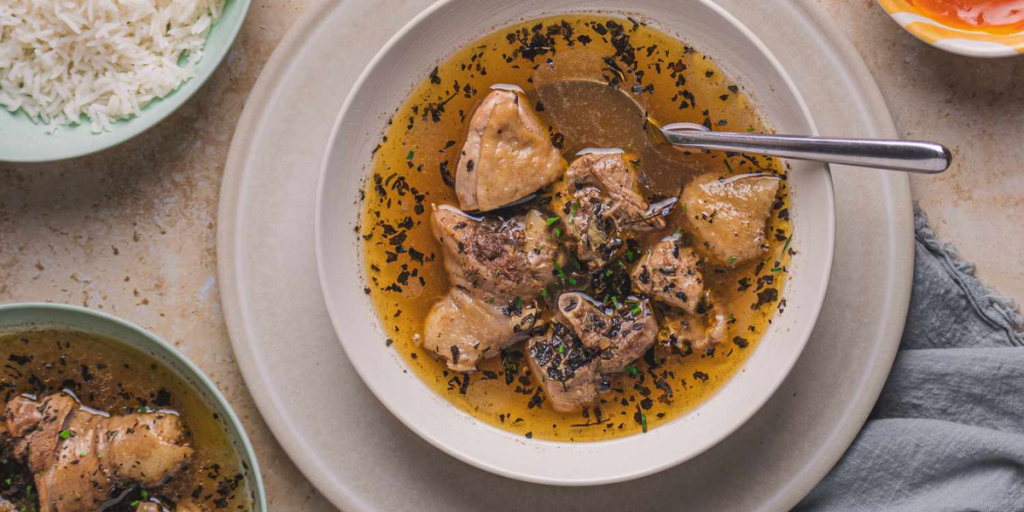
Marinating your chicken before cooking it is one of the most effective ways to enhance the flavor of your chicken pepper soup. A good marinade will penetrate the chicken, making it tender and flavorful, even before it hits the broth.
Simple Chicken Marinade for Pepper Soup
Here’s a simple but effective marinade to use for your chicken:
- 2 cloves of garlic, minced
- 1 tablespoon of freshly grated ginger
- 1 teaspoon of salt
- 1 teaspoon of ground uziza seeds
- 1 tablespoon of ground crayfish
- 2 tablespoons of oil (vegetable or olive oil)
- 1 teaspoon of pepper (Scotch bonnet or black pepper, depending on your heat tolerance)
Mix these ingredients together and rub them generously over the chicken pieces. Allow the chicken to marinate for at least 30 minutes before cooking, but for best results, let it marinate overnight in the fridge.
Why Marinating Works:
- Infuses Flavor: The marinade penetrates the chicken, ensuring every bite is flavorful.
- Tenderizes the Meat: Ingredients like ginger and salt help break down the proteins in the chicken, making it more tender.
- Enhances Spice Absorption: Marinating allows the chicken to absorb the heat from the peppers, ensuring that every bite has a balanced spiciness.
Creating a Rich, Flavorful Broth
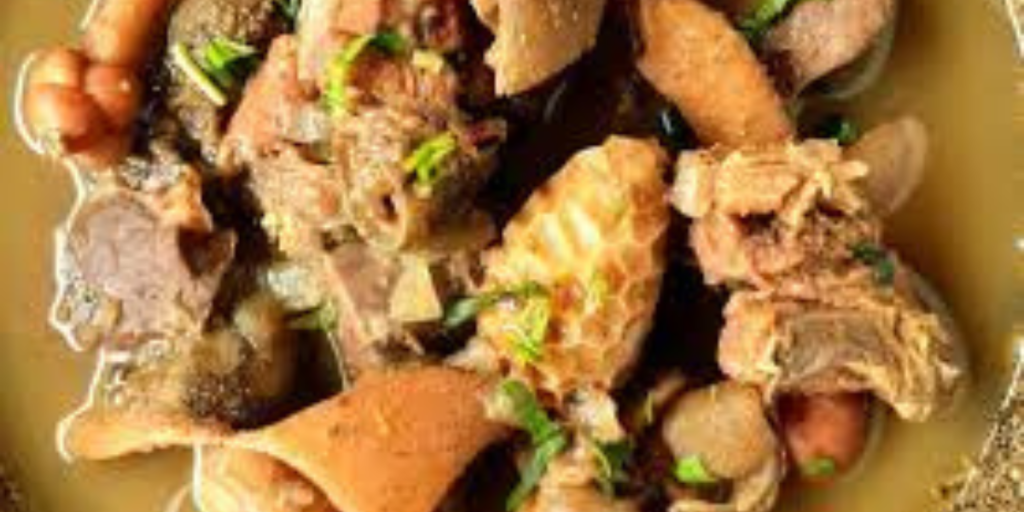
The broth is the foundation of any good chicken pepper soup, and creating a rich, flavorful broth is key to making the dish better. Here’s how to make the perfect broth for your soup:
How to Make the Base of Chicken Pepper Soup
Start by sweating your aromatics in a large pot. This means cooking the onions, garlic, and ginger in a bit of oil over medium heat until they are soft and fragrant.
Next, add your marinated chicken to the pot, browning the pieces slightly to seal in the flavor. This also caramelizes the chicken, adding depth to the broth.
Adding Water and Stock
Once the chicken is browned, add enough water to cover the chicken. If you have homemade chicken stock on hand, this is the perfect time to use it. Chicken stock adds even more flavor to the broth, but water works fine if stock isn’t available.
Simmering to Perfection
The secret to a delicious chicken
pepper soup lies in slow simmering. The longer you allow the chicken and spices to simmer together, the richer and more flavorful the broth becomes. This process extracts all the goodness from the ingredients, creating a well-balanced and deeply aromatic soup.
Simmering Techniques for the Perfect Chicken Pepper Soup
- Low and Slow Cooking: Once you’ve added the water or stock, bring the soup to a boil, then immediately reduce the heat to a simmer. Cooking over low heat allows the chicken to cook gently, keeping it tender and allowing the flavors to meld together over time.
- Simmering Time: Let the soup simmer for at least 45 minutes to an hour. The longer you simmer it, the better it tastes, especially if you’re using tougher cuts like the chicken neck, back, or wings.
- Skimming the Foam: As the chicken cooks, foam or scum may rise to the top of the pot. This is perfectly normal but should be skimmed off to ensure a clear, clean-tasting broth.
- Flavor Adjustment During Simmering: Taste the broth about halfway through the cooking process. Adjust the seasoning as necessary—this is the perfect time to add more salt, pepper, or spices like crayfish or alligator pepper. Remember, flavors intensify over time, so be cautious not to over-season early on.
Layering Flavors: Adding Spices in Stages
For a more complex broth, spices should be added in stages. This allows the flavors to develop gradually, making the soup more nuanced. Here’s the ideal timing for adding spices to your chicken pepper soup:
- First Stage (Before Boiling): Add basic spices like salt, pepper, uziza seeds, and alligator pepper at the start. These spices form the foundation of the soup.
- Second Stage (Halfway Through Simmering): Add more complex flavors like ground crayfish and ehuru. These spices have bold flavors that should develop slowly in the broth.
- Final Stage (Towards the End): Add the finishing herbs and a final sprinkle of crayfish or extra pepper to adjust the spice level before serving.
How to Cook Goat Meat pepper soup best Recipe of 2024
Boosting the Flavor with Extra Ingredients
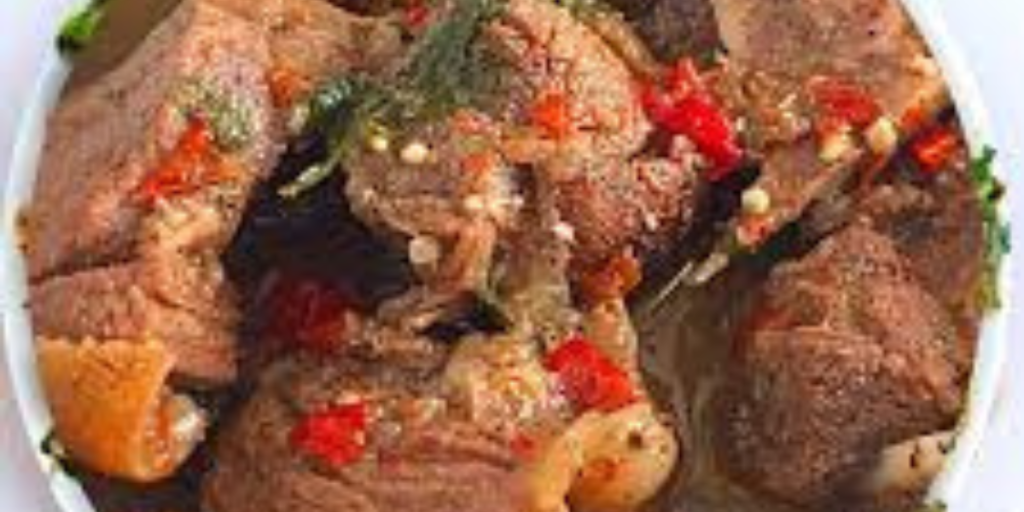
While traditional chicken pepper soup is relatively simple, using just a handful of spices and chicken, there are several additional ingredients you can incorporate to make the dish more flavorful and nutritious. These ingredients can boost the overall flavor and provide extra layers of complexity to the soup.
Adding Vegetables for Extra Texture and Flavor
Vegetables can add texture, color, and flavor to your pepper soup. Here are some vegetables that pair well with chicken pepper soup:
- Yam or Plantains: Adding chunks of yam or unripe plantain gives the soup a starchy component, making it more filling and hearty. The starchy texture of yam also helps thicken the broth slightly, giving it a richer consistency.
- Carrots and Potatoes: These root vegetables provide a subtle sweetness and help balance out the spiciness of the pepper soup. Add them halfway through the cooking process so they cook to the perfect tenderness.
- Pumpkin Leaves (Ugwu): Adding pumpkin leaves toward the end of the cooking process gives the soup a fresh, earthy flavor. Ugwu is also rich in nutrients, boosting the health benefits of the dish.
- Okra: Though not traditional, adding a small amount of okra can give the soup a slight “draw” or thickening, similar to what is found in some Nigerian soups like ogbono.
Using Protein Combinations for Added Depth
While chicken is the star of the dish, you can make chicken pepper soup more interesting by incorporating other proteins. This is particularly common in party or festive versions of pepper soup.
- Smoked Fish: Adding pieces of smoked fish (such as mackerel or catfish) toward the end of the cooking process infuses the broth with a rich, smoky flavor that complements the spices in the soup.
- Goat Meat: Goat meat adds a unique, gamey flavor that works well in pepper soup. If you’re feeling adventurous, you can combine chicken with goat meat, cooking the goat for longer and adding the chicken halfway through the cooking process.
- Shrimp or Prawns: For a more luxurious twist, adding prawns or shrimp toward the end gives the soup a seafood flavor that pairs beautifully with the spices and chicken.
Herb and Spice Blends to Elevate Flavor
Beyond the essential spices, you can experiment with spice blends and herb combinations to personalize your chicken pepper soup. Consider adding these elements for an elevated flavor:
- Coriander and Cumin: While not traditional, a pinch of these spices can give the soup a subtle Middle Eastern twist, adding warmth and earthiness.
- Bay Leaves: Add a couple of bay leaves to the broth for a more aromatic depth. Be sure to remove them before serving.
- Thyme and Basil: These herbs add freshness and a mild sweetness to the soup, making it even more fragrant and palatable.
Perfecting the Presentation
When it comes to making your chicken pepper soup better, presentation is key—especially if you’re serving it at a gathering or for guests. Here’s how to present your soup in a way that makes it look as good as it tastes:
Serving in Traditional Bowls
In West African tradition, pepper soup is often served in wide, shallow bowls. This allows the chicken and any added ingredients (like yam or plantain) to be easily accessible and visually appealing. Consider serving your soup in traditional clay bowls to enhance the cultural experience of the dish.
Garnishing for Visual Appeal
Even though chicken pepper soup is a relatively simple dish, adding a few garnishes can make it look more refined:
- Fresh Herbs: A sprig of fresh scent leaves, basil, or cilantro on top adds a pop of color and freshness.
- Sliced Scotch Bonnet: For an extra spicy kick and visual appeal, you can thinly slice a Scotch bonnet and scatter a few slices on top before serving.
- Lemon Wedges: Serve with lemon or lime wedges on the side. A squeeze of citrus just before eating can help balance the heat and add brightness to the dish.
Side Dishes to Accompany Chicken Pepper Soup
Chicken pepper soup is delicious on its own, but it can be served alongside side dishes to create a more complete meal:
- Steamed White Rice: This is a classic pairing. The mild flavor of the rice helps balance the heat from the pepper soup.
- Fried Plantains: Sweet, ripe plantains complement the spiciness of the soup and add a crispy texture.
- Boiled Yam or Potatoes: Serve with slices of boiled yam or potatoes for a more filling meal.
Serving Suggestions for Special Occasions
For a party or festive gathering, serve chicken pepper soup in individual bowls with a variety of garnishes on the side, allowing guests to personalize their soup. You can also provide a selection of accompaniments like rice, plantains, and bread.
Simple Meal for dinner in usa Best Of 2024
Frequently Asked Questions (FAQ)
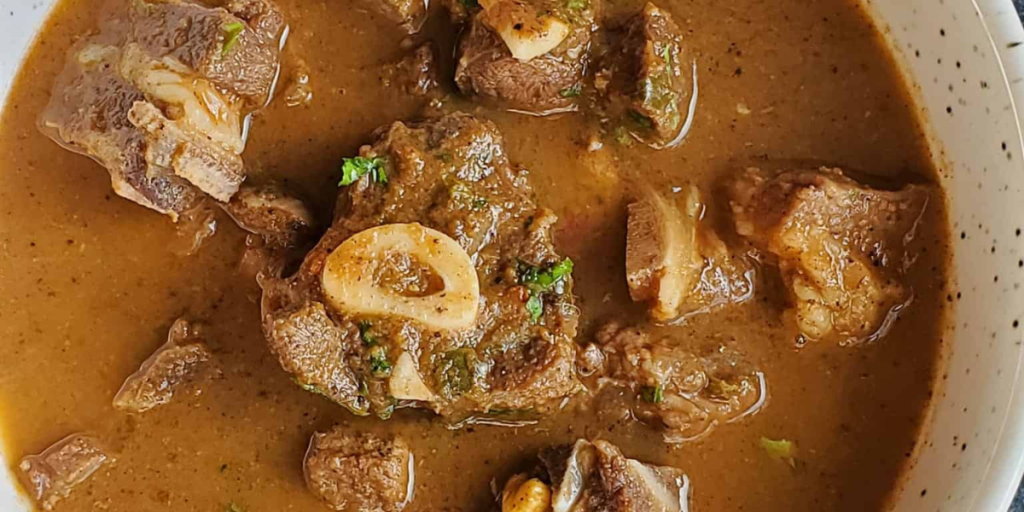
Q: How spicy should chicken pepper soup be? A: The spice level in chicken pepper soup is a matter of personal preference. Traditionally, it is a spicy dish, with the heat level often dictated by the number of Scotch bonnet peppers used. If you prefer a milder soup, reduce the amount of pepper or remove the seeds from the peppers to lessen the heat while still retaining flavor.
Q: Can I use other types of meat for pepper soup? A: Yes! While chicken is a popular option, pepper soup can be made with various types of meat, including goat, fish, or even beef. Each type of meat offers a unique flavor profile, so feel free to experiment.
Q: What’s the best way to store leftover chicken pepper soup? A: Leftover pepper soup can be stored in an airtight container in the refrigerator for up to 3 days. To reheat, gently warm it on the stovetop over low heat. You may need to add a little water or stock to the soup when reheating, as the broth can become more concentrated when stored.
Q: Can I freeze chicken pepper soup? A: Yes, chicken pepper soup freezes well. Store it in a freezer-safe container for up to 3 months. Thaw it in the refrigerator overnight before reheating. Freezing may slightly change the texture of the chicken, but the flavors will remain intact.
Q: How can I make my pepper soup less greasy? A: To reduce grease, trim any excess fat from the chicken before cooking. You can also skim off any excess oil that rises to the top during simmering. Using free-range chicken, which tends to be leaner, can also help prevent an overly greasy soup.
Q: Can I use a pressure cooker to make chicken pepper soup? A: Yes, a pressure cooker can speed up the cooking process. However, it’s important to monitor the soup closely to ensure the chicken doesn’t overcook and become too tender. Start with a shorter cooking time and adjust as needed.
Perfecting Your Chicken Pepper Soup
In conclusion, making the best chicken pepper soup is all about balancing flavor, spice, and texture. From selecting high-quality chicken and marinating it for maximum flavor, to creating a rich broth with the perfect blend of spices, each step of the process is essential for crafting an unforgettable dish. By taking the time to simmer the soup properly, layering the flavors, and experimenting with additional ingredients like vegetables and other proteins, you can elevate this traditional dish into something truly special.
Whether you’re making it for a quiet dinner at home or for a festive gathering, chicken pepper soup is a versatile and satisfying dish that never fails to impress. So, grab your ingredients, fire up the stove, and enjoy the delightful aromas that fill your kitchen as you master the art of making better chicken pepper soup!
















